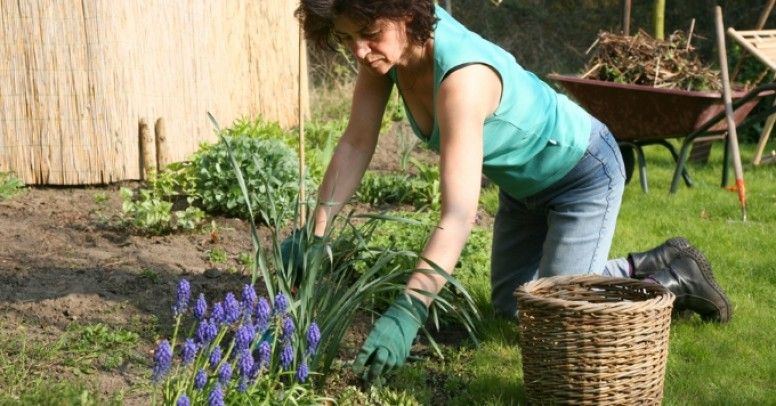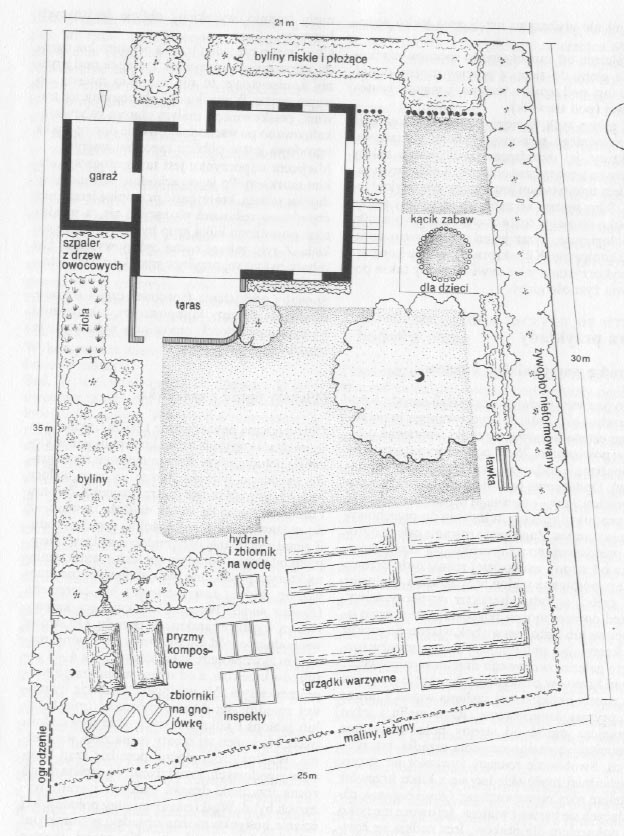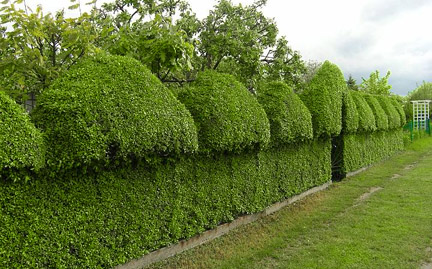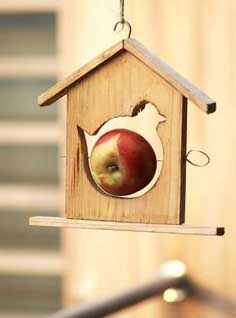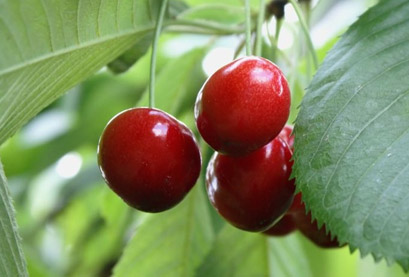 Do uprawy w ogrodzie przydomowym należy wybierać przede wszystkim te warzywa i owoce, które spożywa się świeże, a zatem warzywa liściowe, groch na zielone ziarno, pomidory, ogórki, owoce jagodowe, wiśnie, brzoskwinie, morele i zioła przyprawowe. Śmiało można zrezygnować z kapusty oraz jabłek, które nie są drogie i są dostępne na rynku przez cały rok. Godne polecenia są również gatunki przydatne na przetwory: pomidory, ogórki, groch na zielone ziarno i fasola szparagowa oraz owoce jagodowe, wiśnie i śliwki. Inaczej wygląda struktura upraw w wiejskim ogrodzie przydomowym, w którym nie powinno niczego zabraknąć ze względu na to, że gospodyni wiejska nie ma czasu ani możliwości kupowania w pobliżu domu potrzebnych codziennie warzyw i owoców. W wiejskiej zagrodzie istnieją natomiast doskonałe warunki przechowywania warzyw świeżych i ich przetworów, toteż powinny być tam uprawiane odpowiednie gatunki i odmiany.
Do uprawy w ogrodzie przydomowym należy wybierać przede wszystkim te warzywa i owoce, które spożywa się świeże, a zatem warzywa liściowe, groch na zielone ziarno, pomidory, ogórki, owoce jagodowe, wiśnie, brzoskwinie, morele i zioła przyprawowe. Śmiało można zrezygnować z kapusty oraz jabłek, które nie są drogie i są dostępne na rynku przez cały rok. Godne polecenia są również gatunki przydatne na przetwory: pomidory, ogórki, groch na zielone ziarno i fasola szparagowa oraz owoce jagodowe, wiśnie i śliwki. Inaczej wygląda struktura upraw w wiejskim ogrodzie przydomowym, w którym nie powinno niczego zabraknąć ze względu na to, że gospodyni wiejska nie ma czasu ani możliwości kupowania w pobliżu domu potrzebnych codziennie warzyw i owoców. W wiejskiej zagrodzie istnieją natomiast doskonałe warunki przechowywania warzyw świeżych i ich przetworów, toteż powinny być tam uprawiane odpowiednie gatunki i odmiany.
W gospodarstwie wiejskim istnieje na ogół możliwość uprawy warzyw i owoców na dowolnej powierzchni, ale zakładając, że na jednego członka rodziny powinno przypadać 100…150 m2 ogrodu, łączna jego powierzchnia nie przekracza najczęściej 500 m2. Właściwe utrzymanie większego ogrodu zabierałoby zbyt dużo czasu domownikom, obarczonym innymi pracami w gospodarstwie. Rezultatem pracy ogrodniczej jest produkcja warzyw i owoców pozwalająca, w dużym stopniu, zaopatrywać własne gospodarstwo domowe. Bieżące wydatki na zakupy tych produktów zmniejszają się dość znacznie.
Oprócz wymiernych korzyści płynących z pracy w ogrodzie jest jeszcze jedna, często niedoceniana, a mianowicie czynny wypoczynek przy uprawie gleby, siewie i zbiorach, przy pracach zupełnie innych od codziennie wykonywanych czynności zawodowych. Ruch na świeżym powietrzu i wśród zieleni, obserwowanie rozwoju roślin i poznawanie procesów zachodzących w przyrodzie jest bezcenną przeciwwagą pośpiechu i stresów.
Przeskocz do treści
Porady Inspiracje

